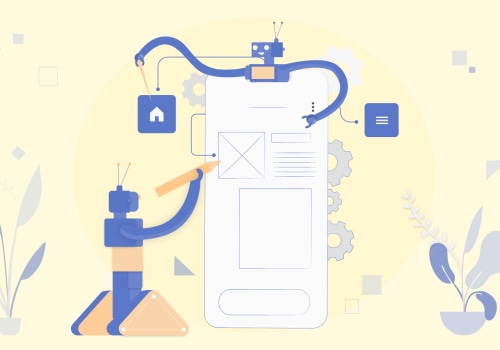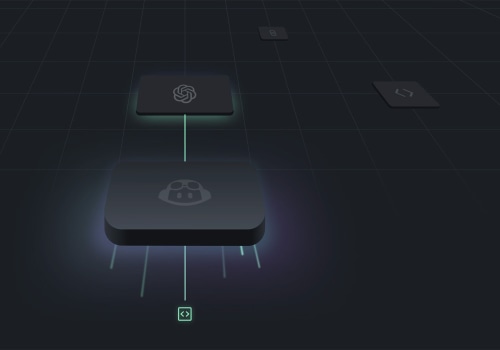How to make sure your website is easy to use A positive user experience is important when it comes to driving traffic to your website. Understanding these key components is an important part of your brand's digital marketing success. Maybe the navigation was difficult to use or wasn't rendering correctly on the device you were on. Maybe it even had an outdated feel or there were errors when loading the graphics.
If you're like most consumers, that user experience has probably affected your overall opinion of the company. In fact, you might have even chosen a competitor who had a more professional website. Why? The success of your digital marketing depends on the presence of your website and certain mistakes can really damage your overall reputation as a quality company. To help you prevent this from happening, we've compiled 16 things to know when creating an easy-to-use website.
A user-friendly website is a page that looks professional and is easy to navigate for anyone who visits your website, including people who require certain accessibility needs. The idea behind this process is called usability, which basically means that the website is easy to use and allows the visitor to access the right information in the easiest way possible. To give you an idea of the areas you should consider when determining if your website is easy to use, here are some features to consider. One of the most important features of an easy-to-use website is efficient navigation.
Whatever structure you select, it's vital that you allow visitors to get where they want to be quickly and efficiently. Easy-to-use websites have a clear call to action. When your visitors can clearly identify the next steps, they're much more likely to actually do them. For example, a button that links to a contact form to book a session or a phone number to make a call.
Not only are fast load times critical to the user experience, but they also have a big impact on SEO. So how do you actually create an easy-to-use website? Website design isn't about what's most convenient for your team. Instead, you should choose a style that puts the user and their needs first. When you adopt this perspective as your ultimate goal, it's easier to spot areas where there might be a problem or where the overall user experience isn't the best.
Another tip is to use language and tone that are accessible to your target audience. When designing an easy-to-use website, choose color combinations that reflect your brand values. Nowadays, no one wants to read long paragraphs and walls of text. Instead, use information fragmentation as a way to visually divide the data sections of your website.
The efficiency of your online forms is important to the ease of use of your website. After all, if someone takes the time to fill one out, they'll likely need a follow-up at the right time. Make sure your forms are simple enough to be easy to use, work properly, and send them to the right person to handle the request, whether it's an automatic download, a customer service representative, a member of the sales team, or someone else. If your website is old or you haven't updated it in a couple of years, the first step in creating a user-friendly website is to improve the overall design.
Having a website that's easy to navigate is crucial to the user experience. Not only is mobile compatibility crucial to the overall user experience, but it's also an important component of search engine optimization (SEO). Finally, be sure to consider basic psychology when it comes to creating an easy-to-use website. There are certain elements that most people are used to when it comes to visiting a page.
If you're not sure where to start, take a look at your favorite pages or even competing sites to see how they've used the basic architecture of the site. Creating an easy-to-use website is critical if you want your brand to stand out as a reliable source within your industry. The way in which information is organized and presented on your website is vital for good usability. It has become even more important today, as websites offer a wide range of information and resources to attract your target market.
Plan the sections and categories of your website carefully and present the information so that users can easily find it. Always think from the perspective of your users. This is especially important if you offer a lot of content on your company's website. Website usability plays a vital role in the success of a website.
Good usability helps provide a seamless experience for visitors and improves their chances of success. It's one of the factors that differentiates a professionally designed website from the rest. Below are 11 usability features that every website should display. You can help make your website a success.
To make your website easy to use, make sure that your navigation scheme is simple and that the information is readable. It should load quickly, and its color scheme and call to action should be appealing. Design social icons for easy content sharing. Allow users to chat with your company from the site.
The technical implementation of a website is incredibly important. A flawless configuration of all the content on the page is crucial to ensure smooth use. Make sure that all content is maintained correctly. Display and loading errors are considered unprofessional and discourage users from returning to the site.
Content that requires robust computing power can cause long and irritating load times that quickly drain users' patience. Regular site testing proves to be valuable, as it helps ensure that you discover deficiencies before someone else does. Since 62% of all website traffic comes from mobile devices, having a responsive site is a no-brainer. Google tends to rank sites that work well on mobile devices better than sites that don't, so we recommend that you take a mobile-focused approach when designing your site.
Slow loading websites just aren't enough today. If your website doesn't load in 3 seconds, you'll lose visitors. Statistical data shows that an average of 53% of visits to mobile sites were abandoned if a page took more than 3 seconds to load. Sites that loaded in 3 seconds had approximately 70% longer sessions, 35% lower bounce rates and 25% higher ad visibility than sites that took almost four times longer (12 seconds).
For an attractive design, choose a website design that is familiar to your target users. For example, a two- or three-column layout is quite common. Having a column on one side, either on the left or on the right, of each page makes the overall presentation look coherent and professional. A pleasant user interface is also key to providing a user-friendly website.
In addition, make sure that your corporate identity is reflected in your color scheme and, at the same time, make sure that the background color you choose is in harmony with the type of font. For specific guidelines on the use of fonts, read the article “12 typographic guidelines for good website usability”. Otherwise, visitors won't be able to read your content and will move to another site. If you have significant inventory, it's essential to provide a search engine box in the upper right corner of every page.
Users appreciate this, as it can save them a lot of time. In addition, users will naturally use a search engine within their website if they can't find what they're looking for, especially if they can't figure out how to locate it using the navigation system. A little tip is that the search engine should be designed to show zero results if what you're looking for isn't available. Otherwise, users will feel deceived and leave the site.
For a detailed list of guidelines for implementing a usable search service on your site, read the article “Ten Usability Guidelines for Designing the Search Interface”. The 508 website accessibility guidelines highlight simple web design techniques that can be applied to ensure that your website can be easily accessed (on-screen readers), making your website available to a wider audience. You can get a great design from your website that users will find easier to navigate from a leading Designhill marketplace. The design of many contemporary websites has been heavily influenced by the user interfaces of social media platforms such as Facebook or LinkedIn.
A website that meets the best practices and relevant web design standards is usually more robust and reliable. This means that, in addition to designers doing great graphic design work on their website, caching content is also equally important to make the site easy to use. There are well-established conventions for web design and these determine the appearance of a modern website. It's no longer a suggestion that you invest in a user-friendly design to keep your viewers on your website and encourage them to return, it's a requirement.
However, most successful websites follow some basic principles to ensure that a unified design adheres to a basic theme or message that will be transmitted to the viewer. While large companies rely mostly on typical old school web design tricks (which include the usual functions, such as multi-language options and a navigable page header or sidebar), smaller companies are starting to prefer scrollable websites. Designhill is the world's leading creative marketplace that meets the creative needs of both companies and individuals, who can obtain high-quality designs from professional designers and buy unique products. The optical design of a website always depends on its respective topics and the sector for which it is created.
The Americans with Disabilities Act (ADA) specifically outlines several areas in which website owners should facilitate access to information, regardless of whether someone has a disability or a challenge that prevents them from navigating the current design. With so many new and notable web design and development trends emerging almost daily, arriving at a regular website is simply disappointing. The right contrast between the background of the website and the content is one of the most basic but most important web design principles that should never be overlooked. Designing a great user experience on a website requires understanding the problems that different visitors have to solve.
Visitors expect certain standards that website designers should know when working on a project. .




